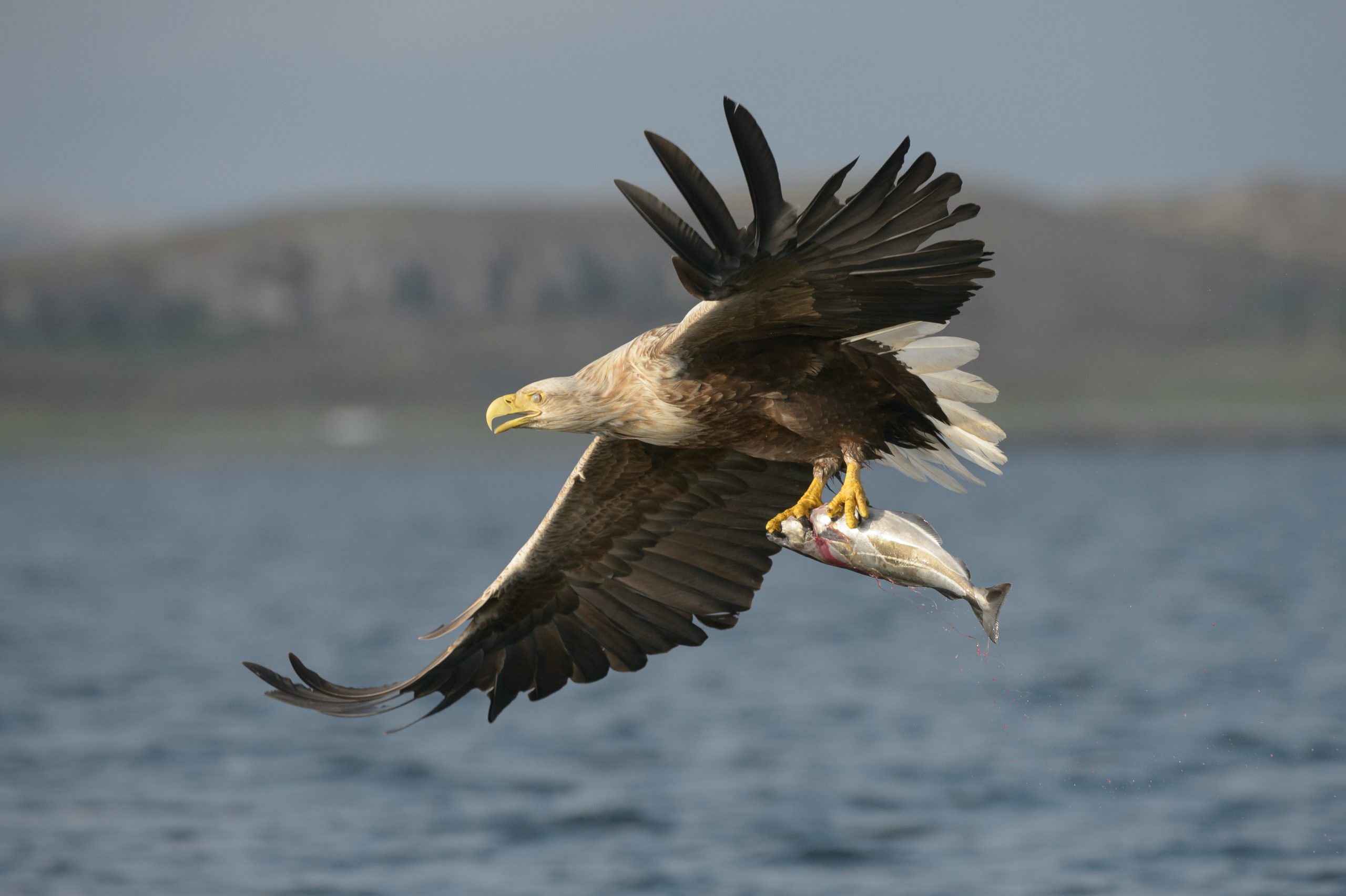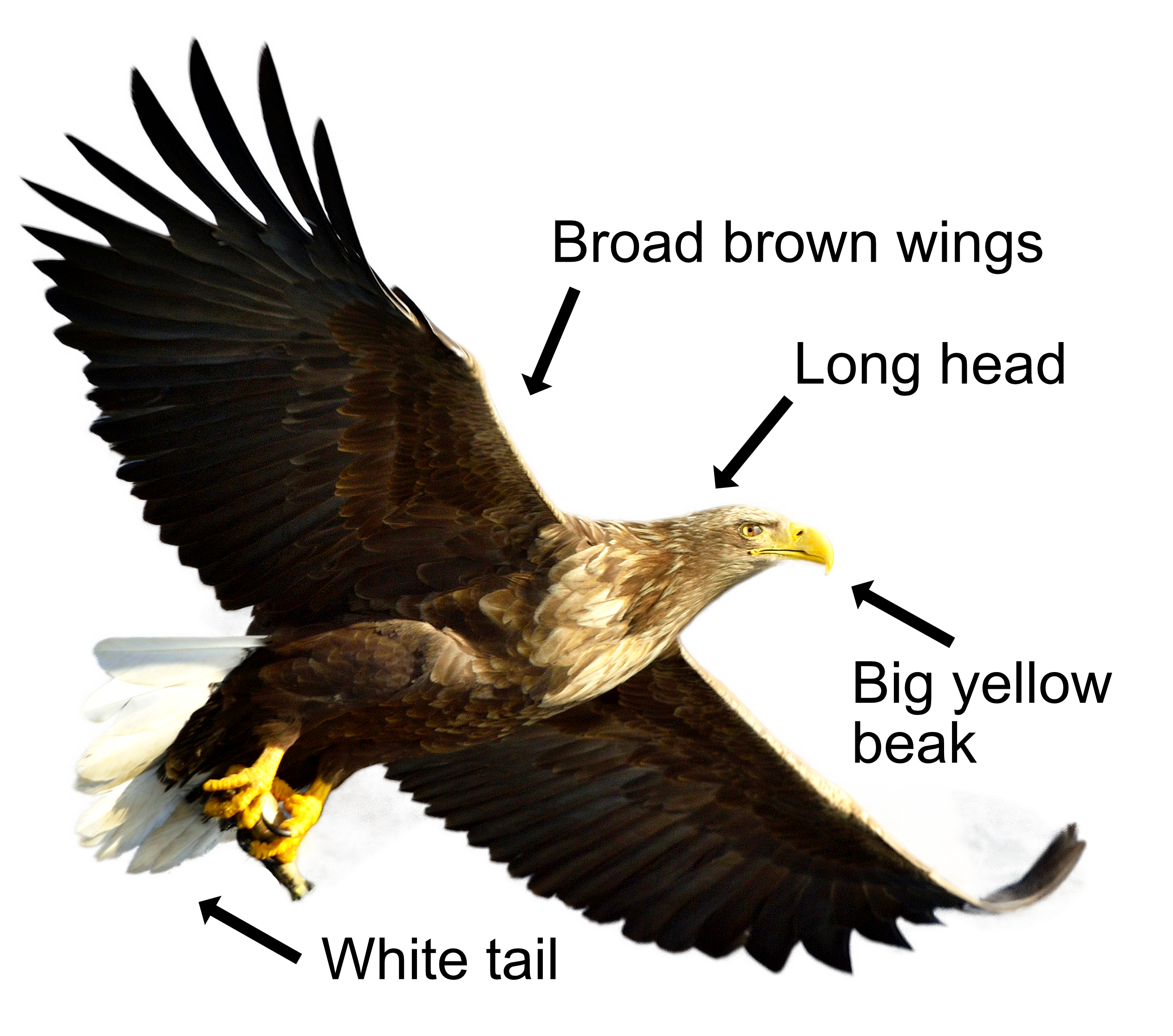
The White-tailed Eagle is huge! It is an eagle of the sea. It is the largest eagle in Europe and the fourth largest eagle in the world, resembling a flying barn door with a big beak. Being so big, it is a bit of a playground bully, pinching food from other birds and throwing its weight about.
The White-tailed Eagle is brown with a long-looking pale head, a white tail, and a big, mean, hooked yellow bill (that is clearly visible even in flight). The wings are broad with obvious fingered tips. It has a short wedge-shaped tail, and the head protrudes when flying. Their flight is like a Heron's with shallow wing beats followed by a long glide. It soars with its wings held flat, which differs from the Buzzard's V-shape, though its barn door size is difficult to miss.

They can spend 90% of the time perched or standing on the ground looking mean, especially if the weather is poor. The males are slightly smaller than the females. They moult slowly and continuously throughout the year so they can always fly or pick on people they don't like. Their call is a dog like yapping "kew, kew, kew" with most calls being made during courtship or near their nest.
White-tailed Eagles are carrion feeders and opportunistic hunters, stealing food from other birds and even mugging otters! They will hunt singly or in pairs and, being such enormous birds, they like big prey. They normally eat fish like cod, herring or trout, but will also eat birds like ducks and gulls, and medium-sized mammals. When fishing, they fly low over the water, stop to hover for a moment, then drop to snatch a fish from the surface.
White-tailed Eagles pair for life and perform a stunning sky dance when courting where they touch talons. They build their nest in a large tree or on a cliff edge, making it from large sticks and driftwood, then lining it with grass and seaweed. A nest can be reused for many years and gets huge with the yearly added material. Two eggs are laid in April which are incubated by mum and hatch 38 days later. Both parents care for the young who can fly after 70 days. They are fed for a further month until they are ready to leave home. The young eagles will roam widely to find a place of their own.
The White-tailed Eagle suffered a massive decline because of persecution in Victorian times and nesting failures caused by various chemical pesticides and organic compounds. It is now specially protected and has been reintroduced in Scotland, where there is now a small population of 150 pairs that is growing slowly. Some threats still remain, notably illegal persecution by gamekeepers, the activities of egg thieves and fatal damage to birds from wind turbines.
Their Latin name is 'haliaeetus albicilla' where 'haliaeetus' means 'sea-eagle', from the Ancient Greek 'hali' for 'sea' and 'aetos' for 'eagle'. The 'albicilla' part means 'white-tailed' from the Latin 'albi' for 'white' and 'cilla' for 'tail'.